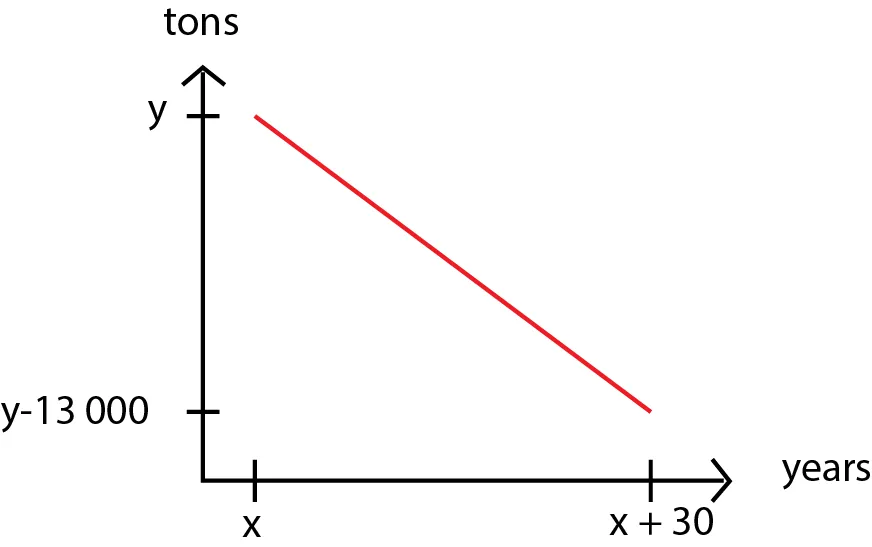
ECHA proposes banning "forever chemicals" in firefighting foams
The European Commission asked ECHA to investigate the environmental and health risks caused by the use of PFAS in fire fighting foams. The result of this investigation concludes that the risks posed by PFAS are not controlled. According to the agency, there is a need to restrict their use throughout the EU to minimize releases.
In this way, it would be possible to prevent risks to human health and the environment and new contamination of groundwater and soil.
Reducing the release of PFAS is important because their persistence and harmfulness to human health and the environment can cause significant damage in the future. Currently, fire-fighting foams containing PFAS are the cause of many environmental contaminations (soil and drinking water) in the EU.
ECHA has therefore proposed a ban on "the placing on the market, use and formulation of all PFAS in fire-fighting foams after use or sector-specific transition periods".
The objective of the transition periods is to allow time for industries to replace foams containing PFAS. The condition is not to decrease the fire safety, paying attention to some points like :
- Reduction of environmental discharges ;
- Proper disposal of expired or waste foam.
The use of PFAS
PFAS are very persistent per- and polyfluoroalkyl substances, composed of more than 4000 chemical compounds. Their chemical properties are quite specific :
- Non-stick
- Waterproofing
- Resistant to high temperatures
This explains their widespread use in everyday life: fire foam, food packaging, technical clothing, etc.
The persistence in the environment of PFAS increases according to the number of carbon contained in the molecule chain. We distinguish PFOA (perfluorooctanoic acid) and PFOS (perfluorooctane sulfonate). The persistence of PFAS is due to the Carbon-Fluorine bond. This type of bond is very stable, it is thus very little degradable in the environment.
What are the impacts of PFAS substances?
Diagram of estimated PFAS emissions over time following restrictions :

Persistent chemicals or "forever chemicals" have adverse effects on human health and are the cause of many diseases. The impact on the economy is very important, especially on the American economy, with a cost of 62.6 billion dollars per year.
According to a study published in Exposure and Health, the different classes of PFASs should not be distinguished, as short-chain PFASs show similar effects to long-chain PFASs.
Health-related costs are estimated to be between $5.52 and $62.6 billion per year. Regulating the use of all PFAS would therefore be an economic benefit.
In addition, the pollution figures are alarming. Pollution from PFAS substances has exceeded the safety levels recommended by the government.
Different visions
In this context, restaurant giants such as McDonald's, Starbucks, KFC or Pizza Hut have made the decision to eliminate PFAS (and other products such as phthalates or bisphenol A) from their packaging by 2023 for some and 2025 for others.
Yum!Brands (parent company of KFC and Pizza Hut) shared a sustainability report and packaging policy to announce the decision.
But according to the chemical industry, short-chain PFASs are not necessarily dangerous. The American Chemistry Council (ACC) said in a study that short-chain PFASs may even have benefits in renewable energy, healthcare and other sectors.
Thus, in their view, PFAS should be treated according to the type of class to which they belong.
Which regulations apply?
Convention of stockholm
In 2001, an international agreement, the Stockholm Convention, was put in place to control persistent organic pollutants (POPs), regulating certain compounds in the PFAS family. PFOS was restricted in 2009, while PFOA was banned for import, export and production in 2020.
REACH
Recently, as part of the European Union's sustainability strategy, new restrictions under REACH have been introduced. From February 2023, perfluorinated carboxylic acids (C0-14 PFCAs), their salts and their precursors will be subject to restrictions in the EU/EEA. Countries have submitted proposals for restrictions to cover a wide range of PFAS uses, restrictions for PFHxA and PFHxS (as well as their salts and precursors). The opinions of ECHA are rather favorable but still require a decision by the European Commission.
In addition, a number of PFAS are present in the REACH candidate list of SVHC.
CLP
Under the Classification, Labeling and Packaging Regulation, certain PFAS are subject to classification and labeling. These include:
- Perfluorooctanoic acid (PFOA)
- Ammonium pentadecafluorooctanoate (APFO)
- Perfluorononan-1-oic acid (PFNA) and its sodium and ammonium salts
- Non-adecafluorodecanoic acid (PFDA) and its sodium and ammonium salts
EcoMundo can assist you in updating all your documents and in evaluating the impact of this classification on your products, if necessary.
Others
Evaluation groups are formed to conduct work on the PFAS study.
Guidelines are in place, notably for drinking water, imposing a limit of 0.5 g/l for all PFAS.
Finally, the EFSA (European Food Safety Authority) has set a safety threshold for the main perfluoroalkyl substances that accumulate in the body.
How to comply with all these changes?
You may be impacted by these changes even if you don't use PFAS directly. You are in the obligation to check the substances used by your suppliers. SVHC Factory software, associated with EcoMundo's regulatory expertise, allows you to outsource part or all of the regulatory data collection from your suppliers. EcoMundo offers you services to manage the traceability of your substances.
ECHA proposes banning "forever chemicals" in firefighting foams
The European Commission asked ECHA to investigate the environmental and health risks caused by the use of PFAS in fire fighting foams. The result of this investigation concludes that the risks posed by PFAS are not controlled. According to the agency, there is a need to restrict their use throughout the EU to minimize releases.
In this way, it would be possible to prevent risks to human health and the environment and new contamination of groundwater and soil.
Reducing the release of PFAS is important because their persistence and harmfulness to human health and the environment can cause significant damage in the future. Currently, fire-fighting foams containing PFAS are the cause of many environmental contaminations (soil and drinking water) in the EU.
ECHA has therefore proposed a ban on "the placing on the market, use and formulation of all PFAS in fire-fighting foams after use or sector-specific transition periods".
The objective of the transition periods is to allow time for industries to replace foams containing PFAS. The condition is not to decrease the fire safety, paying attention to some points like :
- Reduction of environmental discharges ;
- Proper disposal of expired or waste foam.
The use of PFAS
PFAS are very persistent per- and polyfluoroalkyl substances, composed of more than 4000 chemical compounds. Their chemical properties are quite specific :
- Non-stick
- Waterproofing
- Resistant to high temperatures
This explains their widespread use in everyday life: fire foam, food packaging, technical clothing, etc.
The persistence in the environment of PFAS increases according to the number of carbon contained in the molecule chain. We distinguish PFOA (perfluorooctanoic acid) and PFOS (perfluorooctane sulfonate). The persistence of PFAS is due to the Carbon-Fluorine bond. This type of bond is very stable, it is thus very little degradable in the environment.
What are the impacts of PFAS substances?
Diagram of estimated PFAS emissions over time following restrictions :

Persistent chemicals or "forever chemicals" have adverse effects on human health and are the cause of many diseases. The impact on the economy is very important, especially on the American economy, with a cost of 62.6 billion dollars per year.
According to a study published in Exposure and Health, the different classes of PFASs should not be distinguished, as short-chain PFASs show similar effects to long-chain PFASs.
Health-related costs are estimated to be between $5.52 and $62.6 billion per year. Regulating the use of all PFAS would therefore be an economic benefit.
In addition, the pollution figures are alarming. Pollution from PFAS substances has exceeded the safety levels recommended by the government.
Different visions
In this context, restaurant giants such as McDonald's, Starbucks, KFC or Pizza Hut have made the decision to eliminate PFAS (and other products such as phthalates or bisphenol A) from their packaging by 2023 for some and 2025 for others.
Yum!Brands (parent company of KFC and Pizza Hut) shared a sustainability report and packaging policy to announce the decision.
But according to the chemical industry, short-chain PFASs are not necessarily dangerous. The American Chemistry Council (ACC) said in a study that short-chain PFASs may even have benefits in renewable energy, healthcare and other sectors.
Thus, in their view, PFAS should be treated according to the type of class to which they belong.
Which regulations apply?
Convention of stockholm
In 2001, an international agreement, the Stockholm Convention, was put in place to control persistent organic pollutants (POPs), regulating certain compounds in the PFAS family. PFOS was restricted in 2009, while PFOA was banned for import, export and production in 2020.
REACH
Recently, as part of the European Union's sustainability strategy, new restrictions under REACH have been introduced. From February 2023, perfluorinated carboxylic acids (C0-14 PFCAs), their salts and their precursors will be subject to restrictions in the EU/EEA. Countries have submitted proposals for restrictions to cover a wide range of PFAS uses, restrictions for PFHxA and PFHxS (as well as their salts and precursors). The opinions of ECHA are rather favorable but still require a decision by the European Commission.
In addition, a number of PFAS are present in the REACH candidate list of SVHC.
CLP
Under the Classification, Labeling and Packaging Regulation, certain PFAS are subject to classification and labeling. These include:
- Perfluorooctanoic acid (PFOA)
- Ammonium pentadecafluorooctanoate (APFO)
- Perfluorononan-1-oic acid (PFNA) and its sodium and ammonium salts
- Non-adecafluorodecanoic acid (PFDA) and its sodium and ammonium salts
EcoMundo can assist you in updating all your documents and in evaluating the impact of this classification on your products, if necessary.
Others
Evaluation groups are formed to conduct work on the PFAS study.
Guidelines are in place, notably for drinking water, imposing a limit of 0.5 g/l for all PFAS.
Finally, the EFSA (European Food Safety Authority) has set a safety threshold for the main perfluoroalkyl substances that accumulate in the body.
How to comply with all these changes?
You may be impacted by these changes even if you don't use PFAS directly. You are in the obligation to check the substances used by your suppliers. SVHC Factory software, associated with EcoMundo's regulatory expertise, allows you to outsource part or all of the regulatory data collection from your suppliers. EcoMundo offers you services to manage the traceability of your substances.







